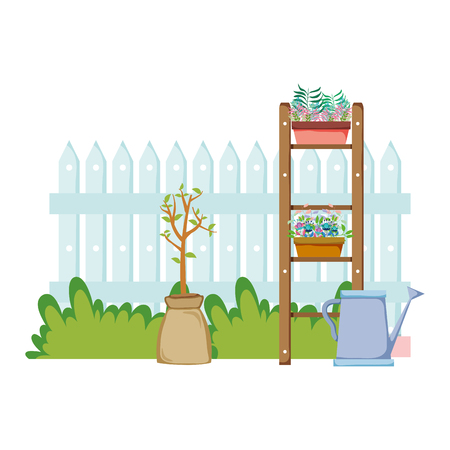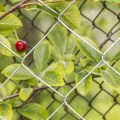1. Getting Started: What is Container Gardening?
Container gardening is an accessible, eco-friendly way to grow plants using pots, planters, or recycled containers instead of planting directly in the ground. Perfectly suited for American city apartments and suburban backyards alike, this practice empowers anyone to cultivate flowers, herbs, or even vegetables—no matter the available space. Embracing container gardening reduces our environmental footprint by maximizing small spaces, promoting water efficiency, and often upcycling items that would otherwise become waste. Whether you’re transforming a sunny balcony in Brooklyn or adding green touches to your Los Angeles patio, container gardening brings sustainable nature right to your doorstep, helping communities across the U.S. live greener and more connected lives.
Essential Vocabulary: Key Terms for Success
If you’re diving into the world of container gardening with an eco-friendly mindset, it’s important to get familiar with the vocabulary that guides both sustainable practices and thriving plants. From upcycled pots to soil mixes designed for water conservation, here are key terms every American gardener should know for successful and earth-friendly container gardening.
Foundational Container Gardening Terms
| Term | Definition | Eco-Tip |
|---|---|---|
| Drainage | The process by which excess water escapes from containers, preventing root rot. | Use broken terra cotta or gravel from old projects to enhance drainage sustainably. |
| Soil Mix | A blend of ingredients like compost, peat-free alternatives, perlite, and coconut coir that supports healthy roots and moisture balance. | Create your own mix using local compost and avoid peat-based products for a lower carbon footprint. |
| Upcycled Pots | Repurposed containers (like coffee cans or old buckets) used instead of buying new planters. | Reduce waste by giving second life to items destined for landfill. |
| Companion Planting | The practice of planting different species together to boost growth, deter pests, or enrich the soil. | Pair pollinator-friendly flowers with vegetables for biodiversity in small spaces. |
| Mulch | A layer of organic material placed on top of the soil to retain moisture and suppress weeds. | Use shredded leaves or grass clippings from your yard for a truly closed-loop system. |
| Self-Watering Container | A pot with a built-in reservoir that provides consistent moisture to plant roots. | D.I.Y. these systems using reused plastic bottles or food-grade tubs. |
Sustainable Growing Practices: More Terms to Know
- Biodegradable Pots: Containers made from natural materials like coconut fiber or compressed paper that break down over time—great for transplanting seedlings directly into garden beds.
- Organic Fertilizer: Plant food derived from natural sources such as worm castings or fish emulsion. Supports both plant health and soil ecology without synthetic chemicals.
- Pest-Repellent Plants: Herbs like basil or marigold that naturally help keep unwanted insects away from your edibles—an essential element in sustainable gardening.
- Native Species: Plants indigenous to your local region; they require less water, attract beneficial wildlife, and are more resilient in American climates.
- Trellis: A structure made from bamboo or reclaimed wood to support climbing plants, maximizing vertical space in small patios or balconies.
Putting It All Together: The Eco-Gardener’s Cheat Sheet
| Sustainable Solution | Description & Example |
|---|---|
| Water Conservation | Add mulch and choose self-watering pots. Collect rainwater in repurposed barrels for irrigation. |
| Pest Management | Practice companion planting and use pest-repellent herbs instead of chemical sprays. |
| Circular Materials Use | Opt for upcycled or biodegradable pots; reuse potting soil by refreshing it with compost between growing seasons. |
Your Sustainable Success Starts Here!
The right words empower your green thumb—and help build resilient, low-impact gardens. Familiarize yourself with these terms as you dig into American container gardening and let every choice reflect your commitment to sustainability and community wellness.

3. Drainage and Watering Know-How
When it comes to container gardening in the U.S., understanding proper drainage and watering techniques is essential for both plant health and environmental responsibility. American gardeners often deal with a wide range of climates—from the arid Southwest to humid Southern states—so it’s important to adapt strategies that are regionally appropriate.
Why Drainage Matters
Good drainage prevents waterlogged soil, which can lead to root rot and other plant diseases. In most American households, containers with pre-drilled holes or DIY drainage solutions (like adding gravel or broken pottery at the bottom) are standard practice. For eco-minded gardeners, using biodegradable pots with natural drainage points supports sustainability by reducing plastic waste.
Watering Techniques for Every Climate
In drier regions like California or Arizona, drip irrigation systems or self-watering planters help conserve water while keeping plants hydrated. On the East Coast, where humidity is higher, watering in the morning helps prevent fungal growth and maximizes absorption. Mulching on top of soil is another American favorite—it slows evaporation and keeps roots cool.
Smart Water Use: A Sustainable Approach
Sustainable container gardening means embracing practices that reduce water waste. Collecting rainwater in barrels—a popular method across the U.S.—is a great way to irrigate your garden naturally. Choosing native or drought-tolerant plants also minimizes your water footprint. By matching your watering routine to local conditions and using efficient drainage solutions, you’ll foster a thriving, low-impact garden that aligns with both healthy living and earth-friendly values.
4. Choosing and Mixing Your Soil
When it comes to container gardening, understanding the vocabulary around soil mixes is crucial for healthy, productive plants—and for practicing sustainability. Let’s explore the most important terms and concepts you’ll encounter while choosing and blending soils that work for both your climate and the planet.
Understanding Soil Mix Components
Not all “dirt” is created equal. The following table breaks down key ingredients you’ll find in sustainable container soil mixes and their eco-friendly alternatives:
| Component | Purpose | Sustainable Option? |
|---|---|---|
| Peat Moss | Retains moisture, lightens mix | Consider alternatives (see below) |
| Coconut Coir | Water retention, renewable resource | Yes—peat-free & biodegradable |
| Perlite/Vermiculite | Aeration, drainage | Yes—mined but reusable; use responsibly |
| Compost | Nutrient boost, improves texture | Yes—homemade or local is best |
| Pine Bark Fines | Adds structure, promotes drainage | Yes—byproduct of lumber industry |
| Worm Castings | Nutrient-rich amendment | Yes—supports living soil health |
| Biochar | Increases nutrient holding, reduces emissions | Yes—carbon negative if locally sourced |
The Move Toward Peat-Free Mixes in America
Pete moss has long been a staple in American potting mixes for its water retention abilities. However, harvesting peat releases stored carbon into the atmosphere, contributing to climate change. Many gardeners are switching to peat-free options like coconut coir or locally sourced compost. These alternatives perform just as well—and align with earth-friendly values.
Mixing Your Own Sustainable Soil Blend: Step-by-Step Guide
- Select a Base: Use coconut coir or high-quality compost as your main ingredient.
- Add Aeration: Mix in perlite or pine bark fines for drainage (about 20-30% of total volume).
- Nutrient Boost: Add organic amendments like worm castings or biochar to enrich the mix.
- Tweak for Climate: In dry climates, increase moisture-retaining components; in rainy regions, favor more aeration and drainage elements.
Sustainable Soil Blending Tips for U.S. Climates:
- Southeast: Go lighter on moisture-holders; humidity does the rest.
- Southwest: Boost water-retentive amendments like coir to counteract arid conditions.
- Northern states: Mix extra compost for both nutrition and warmth during shorter seasons.
The right vocabulary empowers you to make mindful choices—from skipping peat moss to blending locally sourced amendments. By choosing and mixing your own soil with sustainability in mind, your container garden can thrive while treading lightly on the earth.
5. Fertilizers and Natural Boosters
When it comes to container gardening, knowing your way around eco-friendly fertilizers and natural boosters is key to growing healthy plants while minimizing your environmental impact. Let’s break down some essential terms and concepts you’ll encounter in the U.S.
Eco-Conscious Fertilizing
Organic Fertilizer: Made from natural plant, animal, or mineral sources, these fertilizers release nutrients slowly and support soil health over time.
Synthetic Fertilizer: Chemically manufactured; often used for quick results but may harm beneficial soil organisms and contribute to runoff pollution.
Slow-Release Fertilizer: Provides nutrients gradually, reducing the risk of overfeeding and supporting steady plant growth.
Fish Emulsion & Seaweed Extract: Popular liquid organic options in the U.S., rich in trace minerals and gentle enough for tender seedlings.
Composting Options
Compost: Decomposed organic matter that enriches potting mixes and improves water retention. Home composting reduces landfill waste and closes the loop on kitchen scraps.
Vermicompost: Worm castings made by red wigglers—these nutrient-packed boosters are prized by American urban gardeners for their sustainability and plant-friendly microbes.
Bokashi: An anaerobic composting method using bran inoculated with beneficial microbes; it’s popular for handling food scraps efficiently, even in small spaces.
Common U.S. Organic Certifications
OMRI Listed®: The Organic Materials Review Institute certifies products safe for use in certified organic production—look for this label when buying fertilizers or soil amendments.
USDA Organic: This government seal ensures a product meets strict national guidelines for organic growing—trusted by eco-minded growers across the country.
Sustainable Choices Matter
Navigating these container gardening terms empowers you to choose products that support biodiversity, reduce chemical dependency, and keep your urban oasis thriving. By understanding what’s in your fertilizer bag or compost bin, you’re investing in both healthier plants and a more sustainable future.
6. Seasonal Care and Adaptation
Understanding the vocabulary for seasonal care is essential for successful container gardening in the diverse climates found across the United States. Terms like “overwintering,” “frost date,” and “hardening off” are key when preparing your containers to withstand changing weather. For instance, knowing your region’s last frost date helps you time when to move tender plants outdoors or bring them inside. Using “mulch” not only conserves moisture but also insulates roots during temperature swings—a crucial step in eco-friendly gardening.
Adapting your soil mix seasonally can make a big difference, too. During wet months, incorporating extra perlite or sand boosts drainage, while adding composted leaves in autumn enriches the mix naturally. Don’t toss old potting soil; instead, “refresh” it by mixing in organic amendments, supporting a zero-waste approach and keeping materials out of landfills.
Supporting local pollinators is another sustainable practice woven into American container gardening culture. Vocabulary such as “pollinator-friendly plants,” “native species,” and “bee baths” helps gardeners choose appropriate flora and create habitats for bees and butterflies year-round. Swapping out annuals for native perennials ensures blooms for pollinators every season while reducing maintenance and water use.
Finally, reusing containers—whether it’s a vintage galvanized tub or a repurposed food-grade bucket—reflects both creativity and a commitment to sustainability. Familiarize yourself with terms like “upcycling” and “drainage holes” to maximize success while minimizing waste. Through mindful vocabulary and seasonal adaptation, American container gardeners can nurture resilient plantings that benefit both people and planet.


